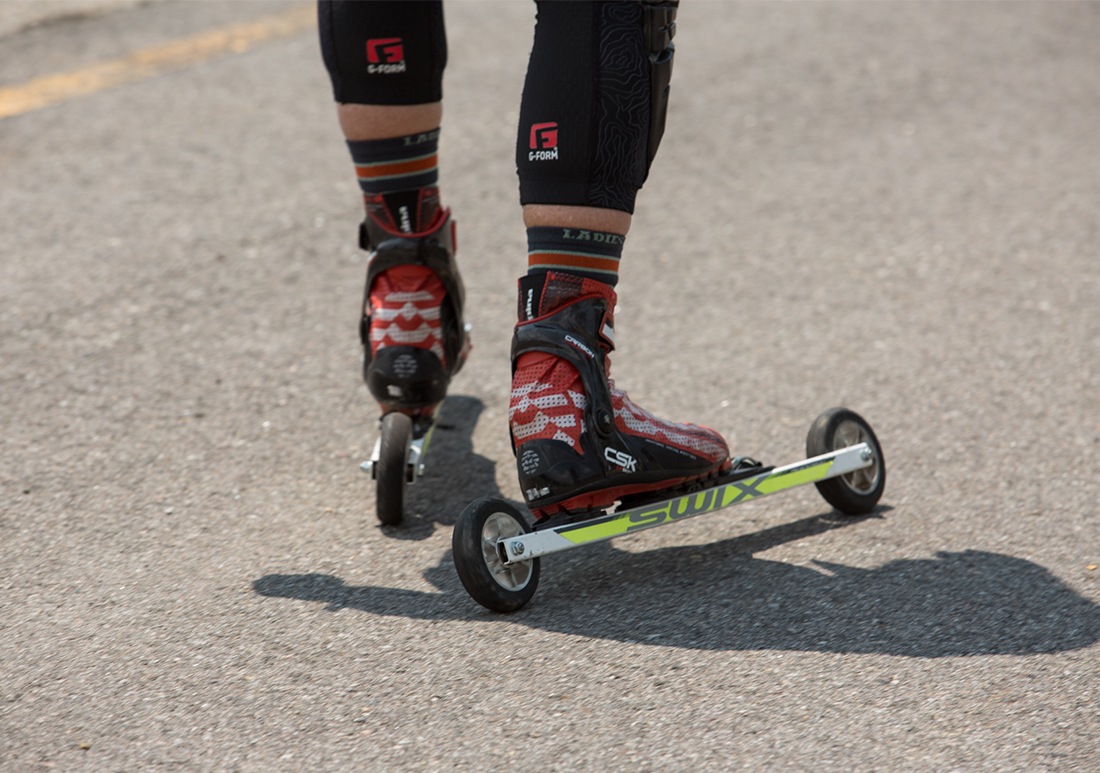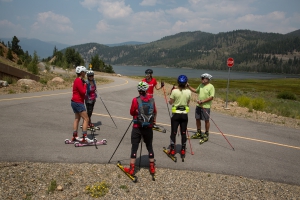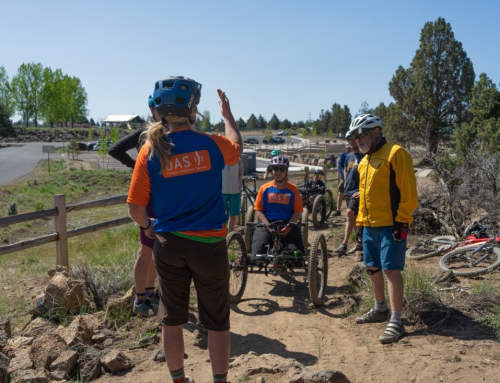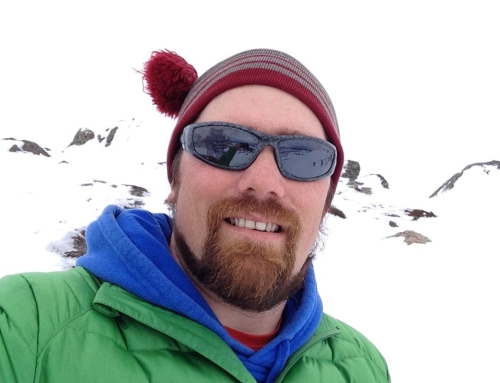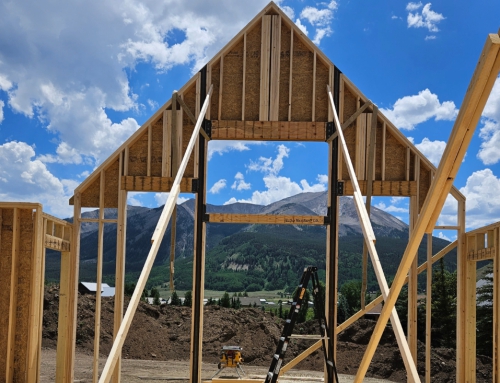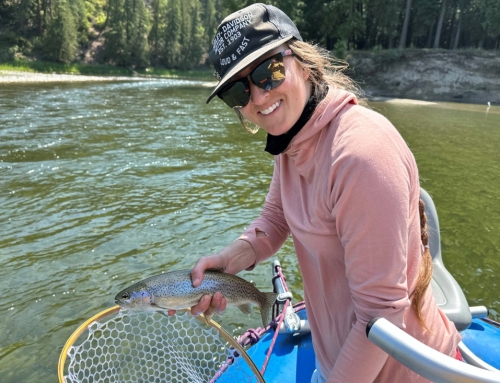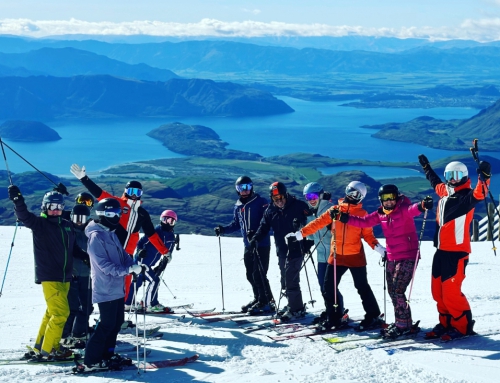32 Degrees: Using Rollerskiing to Boost Your Dryland Training
This article by PSIA Cross Country Team Coach Emily Lovett originally appeared in the Fall 2022 issue of 32 Degrees. You can read the entire magazine here.
Like most cross country skiers, you probably start to get a little antsy this time of year. Days are cooling off and you’re eager to get back on the trails, but there’s no snow in sight. Fear not; the offseason is a fantastic time to work on upping your cross country ski game through dryland training, including rollerskiing.
Rollerskiing has many benefits – besides tiding you over until you can get back on snow. Specifically, this fun activity helps you:
- Maintain and develop balance.
- Increase upper body strength.
- Improve coordination of movements.
- Gain aerobic endurance.
- Give your joints a break with a low-impact activity.
I often hear from people curious about trying this sport, so, starting in 2021, I began working with PSIA-AASI’s Rocky Mountain region and the EnjoyWinter organization to hold “Dryland Training and Introduction to Rollerskiing” camps. The camps provided a demo rollerski fleet and taught the basics in a safe and positive learning environment. In case you want to get into rollerskiing on your own – or attended the camps and want a refresher – here’s a summary of how we rolled (so to speak).
The camps focused primarily on these fundamental elements of cross country skiing:
- Body position – the ability to manage your center of mass over the base of support (foot/ski).
- Push-off/propulsion – the ability to create propulsion both from lower body and upper body.
- Weight transfer – the ability to shift your center of mass from ski to ski.
- Glide – the ability to balance and glide on the ski(s) to carry momentum down the trail.
Most cross country skiers – regardless of skill level – benefit from working to improve their ability to maintain a good body position throughout the skiing cycle of push-off, weight transfer, and glide. Rollerskiing is a great way to work on this because, to control the rollerski, you need to have your center of mass over the base of support. You can’t get away (as easily) with being in the “back seat” on rollerskis.
Our days started with a dynamic warm-up focusing on the fundamentals on foot. We practiced movements to dial in body position and movement without the skis on. Activities included:
- Hike/bound with poles: This movement increases the heart rate while mimicking XC movement.
- Arm/leg swings: This exercise entails balancing on one leg and then swinging your arms and the non-weighted leg to mimic XC movement. [YouTube link]
- Agility ladder exercises: Moving quicky from side to side involves good body position – with the center of mass over the feet – and warms up ankles, knees, and hips with flexion and extension movements.
- Balance exercises: One-leg balance drills, such as the “airplane pose,” activates stabilizing muscles in the whole body. [YouTube link]
- Medicine ball slam: This exercise, in which you hold a medicine ball at eye level and use your whole body to slam it down into the ground, can mimic a double pole motion.
We then put our rollerskis on and moved through the fundamentals on grass. This allowed first-timers to get used to how rollerskis feel in a less intimidating environment than pavement. Rollerski wheels don’t roll too well on grass, so speed is controlled solely by body movements. (And soft grass mentally creates a safe environment.)
Soon we were ready to venture on to pavement! The wheels on rollerskis roll quite easily on hard surfaces, so proper fore/aft body position is key to feeling in control. Similar to being on snow, there can be a tendency for new skiers to “sit back,” resisting the forward movement. When this happens, their center of mass (hips) is over the heel or behind the foot, causing them to feel out of balance and have less control over the ski or rollerski.
To dial in fore/aft body position, we started with double-pole technique. We worked on developing good body position – with the center of mass more over the mid to fore foot while on two skis – and creating propulsion with the upper body. Double poling led us up a gradual hill where we could turn around and learn about various ways to control speed on rollerskis.
By the way, another difference in equipment relates to the poles. For rollerskiing, extra-sharp tips known as ferrules are used and the pole basket is removed. The ferrules bite into the hard surface, and work best on asphalt or fine chip-and-seal.
Speed control is, of course, another important element to learn right off the bat because stopping on rollerskis is different than stopping on cross country skis. Rollerskis do not have the long ski surface to pressure into the snow in a wedge or parallel turn to control speed or stop. We practiced three effective ways to slow down on rollerskis: 1) A wide wedge stance with pressure on the inside edge of the wheels, which helps to resist the forward rolling; 2) Step turns, in which the skier steps across the fall line and perhaps even back uphill to control speed; and 3) A “step wedge,” in which the skier shifts their weight from ski to ski in the wedge stance to create resistance on the wheels.
As we were rolling back and forth on a gentle grade to practice speed control skills, on the uphill, athletes started shifting their weight from ski to ski on their own, using a v1 or v2 to climb the hill. Terrain-based learning in action!
After a lunch break, we had a lot of fun exploring skills through an agility course and then wrapped up the day with a fun cruise on Colorado’s Summit County bike path.
One of my favorite training quotes is “To improve our on-snow skills, we often need to work on improving them off the snow first.” Rollerskiing offers a great opportunity for cross country skiers to use the off-season to maintain their fitness and dial in their skillsets before snow flies.

